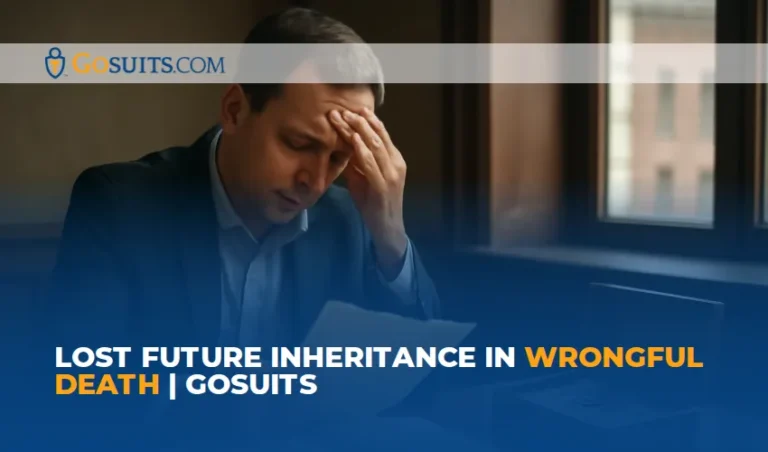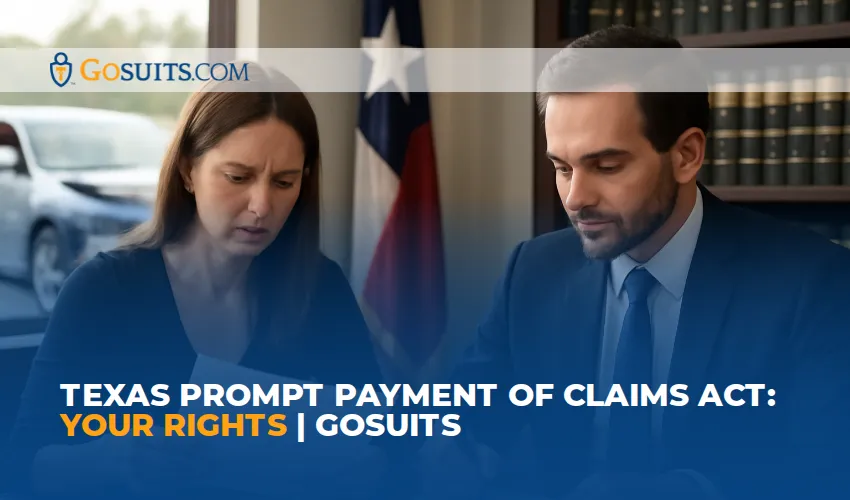- What does “lost future inheritance” mean in a wrongful death case?
- How is a wrongful death claim different from a survival action and probate estate distribution?
- Is loss of future inheritance recoverable in Texas, California, and Illinois?
- What do courts require to prove a claim for lost future inheritance?
- How do economists calculate an inheritance loss and present value?
- Which statistics help establish the economic loss and life expectancy?
- What evidence can strengthen or weaken a future inheritance claim?
- Who can claim the loss and how are funds distributed among beneficiaries?
- What are the statutes of limitations and filing deadlines in TX, CA, and IL?
- How do settlements and verdicts handle taxes, liens, and probate overlap?
- What defenses do defendants raise against future inheritance claims?
- How do Texas, California, and Illinois juries receive instructions on damages and present value?
- How do you start a claim near me in Houston, Dallas, Austin, San Antonio, Los Angeles, San Diego, San Jose, San Francisco, Chicago, Cook County, and Naperville?
- Why does legal help matter for complex pecuniary-loss calculations?
- How can GoSuits help with a lost future inheritance wrongful death claim?
- References and resources
What does “lost future inheritance” mean in a wrongful death case?
Lost future inheritance in a wrongful death case refers to the amount beneficiaries likely would have received from the decedent’s estate had the decedent lived their normal expected lifetime, continued earning, saving, and accumulating assets, and then passed those assets on through a will or by intestacy. It is one form of “pecuniary loss” that focuses on the expected addition to the decedent’s estate that would have been inherited by statutory beneficiaries.
Courts treat this as a distinct economic component from “loss of financial support” or “loss of gifts/benefits.” While loss of support measures what the decedent would have provided the family during life, loss of inheritance looks at what the decedent would have left at death. Because it deals with future accumulation, it requires careful proof and is often contested as potentially speculative. A strong claim relies on evidence of the decedent’s earnings capacity, savings behavior, retirement planning, and realistic life expectancy, and it typically involves testimony from a forensic economist and, where helpful, a financial planner.
How is a wrongful death claim different from a survival action and probate estate distribution?
It helps to separate three different legal tracks that often move in parallel after a fatal injury:
- Wrongful death claim: This is a civil action brought by or for the benefit of surviving family members as authorized by statute. It compensates beneficiaries for their own losses (for example, loss of support and, where permitted, lost inheritance). See LII Wex: Wrongful death.
- Survival action: This is the decedent’s own claim (the personal injury claim the decedent could have brought if they had lived) that “survives” to the estate. It can include medical bills, lost earnings between injury and death, and conscious pain and suffering if applicable. In Texas, see Tex. Civ. Prac. & Rem. Code § 71.021. In California, see Cal. Code Civ. Proc. § 377.30. In Illinois, see the Survival Act at 755 ILCS 5/27-6.
- Probate estate distribution: Regardless of civil claims, the decedent’s existing property at death passes through probate according to their will or intestacy. Wrongful death recoveries usually bypass the probate estate and are distributed directly to statutory beneficiaries under the wrongful death statutes, not to all heirs under the will unless a statute says otherwise.
Because wrongful death damages belong to beneficiaries and survival damages belong to the estate, courts and claim administrators keep these streams separate to avoid double-counting the same loss.
Is loss of future inheritance recoverable in Texas, California, and Illinois?
States treat this remedy within their broader frameworks for “pecuniary loss.” The availability and scope vary by jurisdiction and by proof.
Does Texas allow recovery of lost future inheritance in wrongful death?
Texas wrongful death law allows recovery for “pecuniary loss” by eligible beneficiaries, including the surviving spouse, children, and parents. See Tex. Civ. Prac. & Rem. Code § 71.004 (who may recover) and Chapter 71 generally. Texas courts have treated pecuniary loss broadly in wrongful death, and the concept of “loss of inheritance” has been addressed through jury instructions and case law analysis under pecuniary damages. Texas practice materials and jury-charge guidance recognize that beneficiaries may recover the present value of what the decedent, in reasonable probability, would have accumulated and left to them but for the wrongful death. Authoritative Texas state resources outline wrongful death damages and beneficiaries.
Specific proof and careful economic modeling are critical to avoid speculation. Texas procedure also bars double recovery between wrongful-death and survival claims, so any inheritance-loss theory must be kept distinct from lost support and estate-based survival components.
Does California allow recovery of lost future inheritance in wrongful death?
California’s wrongful death statute authorizes recovery by specified heirs for the “value of the support” and other economic losses the decedent would have provided, along with certain non-economic losses where permitted. See Cal. Code Civ. Proc. § 377.60 and CACI No. 3921 (Wrongful Death) and CACI No. 3920.
California courts often view a separate “loss of inheritance” category with caution because it can overlap with loss of financial support or become speculative. As a practical matter, California claimants frequently present the expected “gifts or benefits” and household financial support under CACI rather than a standalone inheritance-loss line item. Where evidence shows consistent estate building and a clear testamentary plan, some courts may consider those facts within the economic-loss analysis, but the safer and more common route in California is to prove (1) loss of support and (2) loss of expected gifts/benefits using CACI’s framework.
Does Illinois allow recovery of lost future inheritance in wrongful death?
Illinois’ Wrongful Death Act allows recovery for “pecuniary injuries” to the surviving spouse and next of kin, with apportionment in the court’s discretion. See 740 ILCS 180/2. Illinois case law explains that “pecuniary injuries” include the benefits that would reasonably have been received if the deceased had lived, a concept that can encompass expected financial contributions and, when supported by evidence, the accumulation of an estate the next of kin would have likely received. Courts require solid, non-speculative proof; generalized assumptions about eventual inheritances are typically insufficient. The Act directs trial courts to distribute the recovery “in the proportion, as determined by the court, that the percentage of dependency of each beneficiary bears to the sum of the percentages of dependency of all beneficiaries” or otherwise as justice may require. See 740 ILCS 180/2.
What do courts require to prove a claim for lost future inheritance?
Courts expect claimants to present concrete, credible evidence showing it is more likely than not that:
- The decedent would have accumulated assets beyond personal consumption and obligations.
- The accumulation would probably have passed to statutory beneficiaries through a will, trust, or intestacy, with no realistic contrary plans to dissipate, donate, or consume those assets.
- The amount can be reasonably estimated and discounted to present value using accepted economic methods.
Typical proof includes pay history, career trajectory, education, promotion prospects, employer benefits, historical savings rates, retirement-plan statements, estate and financial planning documents, and testimony from a forensic economist who projects savings and bequests under accepted methodologies. Courts have long required that future economic damages be reduced to present value to avoid overcompensation. See, e.g., Jones & Laughlin Steel Corp. v. Pfeifer, 462 U.S. 523, 537–47 (1983) and Chesapeake & Ohio Ry. v. Kelly, 241 U.S. 485, 489–91 (1916).
How do economists calculate an inheritance loss and present value?
Forensic economists follow transparent, testable steps. The Federal Judicial Center outlines generally accepted approaches for estimating economic losses in civil cases, including discounting to present value and considering taxes where appropriate.
A typical inheritance-loss model includes:
- Baseline earnings capacity: Using W-2s, tax returns, industry wage data, and productivity trends to model lifetime earnings.
- Personal consumption and taxes: Subtracting the decedent’s personal living expenses and tax burden to estimate net savings capacity.
- Historical savings and asset mix: Examining 401(k)/403(b), IRA, pension accruals, brokerage accounts, equity compensation, and real estate amortization to estimate the likely savings rate and portfolio growth.
- Planned retirement and estate transfers: Incorporating wills, beneficiary designations, trusts, and past gifting patterns to model the likely flow to beneficiaries at life expectancy.
- Life expectancy and worklife: Using standard life tables and worklife expectancy tables to set the time horizon. The Social Security Administration publishes life tables commonly used in litigation. See SSA Period Life Table resources.
- Discount to present value: Applying a real discount rate net of inflation. Courts accept several methods, including the “real interest rate” approach, “below-market discount rate,” and “total offset” under appropriate evidence. See Pfeifer.
In California, juries receive a separate instruction on present cash value for future economic damages. See CACI No. 3904A (Present Cash Value). Economists also use Bureau of Labor Statistics inflation indices and wage data to ground the projections. See BLS Consumer Price Index.

Which statistics help establish the economic loss and life expectancy?
Credible public data helps translate personal history into a defensible model:
- Life expectancy: Social Security Administration life tables are widely cited to set expected remaining years of life. See SSA: Actuarial Life Table.
- Inflation and wage trends: The Bureau of Labor Statistics disseminates CPI and wage data relevant to projecting real earnings growth and discounting. See BLS CPI.
- Leading causes of death context: Unintentional injuries remain among the top causes of death in the United States, underscoring the frequency of wrongful death litigation. See CDC: Leading Causes of Death.
- Household wealth and inheritances: The Federal Reserve’s Survey of Consumer Finances tracks wealth accumulation and the incidence of inheritances across U.S. families, providing a macroeconomic context for estate-building assumptions. See Federal Reserve: Survey of Consumer Finances.
While macro statistics cannot replace individualized proof, they support reasonable growth, inflation, and life-expectancy inputs that align with judicial expectations for reliable methodologies.

What evidence can strengthen or weaken a future inheritance claim?
Evidence that strengthens the claim includes:
- Stable earnings and advancement: Promotions, performance reviews, degrees, licenses, and employer benefit summaries.
- Documented savings behavior: Regular retirement contributions, automatic transfers to savings/investment accounts, mortgage amortization schedules, and 529 college plans.
- Estate planning: A will, trust, or beneficiary designations naming the wrongful death beneficiaries, plus consistent prior gifting patterns.
- Dependable financial habits: Budgeting records, low consumer debt, and consistent asset growth.
Evidence that weakens the claim includes:
- High consumption or debt: Lifestyle spending that outpaces earnings, unstable employment, or chronic indebtedness.
- Uncertain testamentary intent: No will or contradictory planning documents, estranged relationships, or recent changes reducing expected bequests.
- Speculative assumptions: Overly optimistic returns, ignoring taxes or consumption, or double-counting support and inheritance.
Who can claim the loss, and how are funds distributed among beneficiaries?
Eligibility and distribution are set by statute, not by the decedent’s will:
- Texas: The surviving spouse, children, and parents may bring a wrongful death action. See Tex. Civ. Prac. & Rem. Code § 71.004. Damages are for their own losses and are apportioned among them.
- California: Enumerated heirs and dependents may sue, including spouse or domestic partner, children, and others as specified. See CCP § 377.60. Courts apportion recovery among claimants according to their proven loss.
- Illinois: The action is for the exclusive benefit of the surviving spouse and next of kin, with allocation in the court’s discretion under the Wrongful Death Act. See 740 ILCS 180/2.
Remember that wrongful death recoveries usually do not pass through the probate estate and are not governed by the will’s residuary clause. A separate survival action recovery, if any, is paid to the estate and then distributed under probate law.
What are the statutes of limitations and filing deadlines in TX, CA, and IL?
Deadlines vary by state and claim type. Missing them can bar the claim:
- Texas: Most wrongful death actions must be filed within two years of death. See Tex. Civ. Prac. & Rem. Code § 16.003(b).
- California: The general limitations period is two years for wrongful death. See CCP § 335.1.
- Illinois: Wrongful death actions generally must be commenced within two years after death, subject to statutory exceptions. See 740 ILCS 180/2(d).
Public entities, federal claims, or special statutes can impose shorter notice requirements. Prompt legal help is important to preserve evidence and meet notice and filing rules.
How do settlements and verdicts handle taxes, liens, and probate overlap?
Several administrative issues arise when resolving wrongful death claims:
- Tax treatment: Under federal tax law, compensatory damages for personal physical injuries are generally excluded from gross income. See 26 U.S.C. § 104(a)(2) and IRS guidance. Allocation language should track the law, and any interest or non-physical components may be treated differently. For specific tax questions, consult a tax professional.
- Liens and subrogation: Health plans, Medicare, Medicaid, and others may assert reimbursement claims. Medicare compliance is governed by federal law; see CMS guidance via cms.gov. Addressing liens early helps prevent delays.
- Apportionment and court approval: Courts often approve allocation among beneficiaries and between wrongful death and survival components, especially when minors are involved. Illinois specifically authorizes judicial allocation under 740 ILCS 180/2.
- Probate coordination: Keep survival proceeds within the estate channel and wrongful death proceeds in the beneficiary channel to avoid commingling.
What defenses do defendants raise against future inheritance claims?
Common defense themes include:
- Speculation: Arguing that future estate accumulation and eventual bequests are uncertain, especially for younger decedents or those without a will.
- Overlap/double counting: Contending that projected estate accumulation duplicates loss-of-support calculations.
- Consumption and taxes: Emphasizing higher personal consumption, tax load, divorce risks, or other life events that reduce likely savings.
- Discount rate disputes: Proposing higher discount rates or lower real returns to reduce present value.
- Causation and comparative fault: Challenging liability or attributing a share of responsibility to the decedent to reduce damages in comparative-fault jurisdictions.

How do Texas, California, and Illinois juries receive instructions on damages and present value?
Jury instructions channel the analysis and prevent speculative awards:
- Texas: Pattern jury charges frame pecuniary losses for statutory beneficiaries and are tailored to the proof presented. Texas courts require that future damages be reasonably certain and not speculative. See Texas wrongful death overview and links to practice sources at the Texas State Law Library’s Wrongful Death guide.
- California: Jurors use CACI 3921 for wrongful death damages and CACI 3904A for present cash value. The instructions focus on loss of financial support and loss of gifts/benefits, with caution against speculative awards.
- Illinois: Jurors award “fair and just” compensation for pecuniary injuries under 740 ILCS 180/2, and courts guide them to rely on evidence of the decedent’s financial contributions and the beneficiaries’ dependency, avoiding speculation.
How do you start a claim near me in Houston, Dallas, Austin, San Antonio, Los Angeles, San Diego, San Jose, San Francisco, Chicago, Cook County, and Naperville?
Starting early helps protect your rights and strengthens your damages model:
- Preserve evidence: Gather wage records, tax returns, retirement statements, bank records, debt schedules, prior wills/trusts, and beneficiary designations.
- Open the estate where needed: A survival action may require an estate representative; wrongful death beneficiaries can often file directly under the applicable statute.
- Identify all venues and defendants: Consider where the incident occurred and where defendants do business. Coordinate filings in Texas (Houston, Dallas, Austin, San Antonio), California (Los Angeles, San Diego, San Jose, San Francisco), and Illinois (Chicago, Cook County, Naperville) if the case spans multiple states.
- Retain appropriate experts: Economists, accident reconstructionists, and, for complex products or trucking cases, qualified specialists in the relevant field.
Why does legal help matter for complex pecuniary-loss calculations?
Wrongful death cases involve intertwined wrongful death, survival, and probate issues, sophisticated damages modeling, and strict deadlines. Defense teams frequently challenge inheritance-loss modeling as speculative or duplicative. Working with a wrongful death attorney and forensic economist helps you present complete, admissible evidence aligned with jury instructions and case law. Early involvement also helps manage liens and coordinate court approvals, especially where minors are involved.

How can GoSuits help with a lost future inheritance wrongful death claim?
We know you are dealing with profound loss. Our role is to shoulder the legal and economic analysis so you can focus on your family. GoSuits handles severe injury and wrongful death litigation across Texas, California, and Illinois, including the demanding financial modeling that a future inheritance claim requires. Here is how we work with you:
- Immediate availability and communication: We are available 24/7 for a free consultation, day or night. You can speak with an attorney or trained staff right away. We provide multilingual support, including round-the-clock Spanish and Farsi speakers, and can coordinate translators for other languages on request. We keep you updated at every stage and offer flexible communication by phone, text, email, or secure client portal.
- No win, No Attorney Fees: Our fee is contingency-based. If there is no recovery, you owe no attorney fee. For details, see our policy: No win, No Attorney Fees. We do not add hidden administrative fees. We explain costs clearly at the outset and throughout the case.
- Proprietary case software to move your case faster: We developed internal Personal Injury software used only by our firm to accelerate investigation, document collection, demand preparation, settlement negotiations, filing, and discovery. We are a law firm that invests in technology to stay ahead of insurance defense tactics, reduce delays, and surface the key data economists need to model inheritance loss and other pecuniary damages.
- Experience and results you can review: Our team has 30 years of combined experience and has litigated more than 1,000 cases. You can view settlement and verdict summaries on our website here: past cases. In complex matters such as product liability, 18-wheeler collisions, and catastrophic brain or spinal injuries, we retain qualified in-state witnesses to establish liability and damages credibly in court.
- Where we litigate: We handle severe injury and complex litigation in Texas, California, and Illinois. Our nearest offices serve clients in Houston, Dallas, Austin, San Antonio; Los Angeles, San Diego, San Jose, San Francisco; and Chicago, Cook County, and Naperville. We have attorneys and staff at all locations ready to help 24/7 and can meet in person or virtually immediately.
- Awards and recognitions:
- #1 Settlements and verdicts across multiple U.S. counties according to TopVerdict.
- Top 100 Settlement in Texas.
- Sean Chalaki named Top 40 under 40 by National Trial Lawyers.
- Recognized by Best Lawyers in 2023, 2024, and 2025.
- Selected to Super Lawyers since 2021.
- What we do in a future-inheritance case:
- Collect earnings, benefits, retirement, and investment records to document baseline savings capacity.
- Work with forensic economists to project future accumulation, personal consumption offsets, and present value under accepted methodologies.
- Develop proof of testamentary intent using wills, trusts, beneficiary designations, and consistent gifting practices.
- Separate wrongful death from survival and probate components to avoid overlap and streamline approvals.
- Address Medicare, Medicaid, ERISA, and private liens early to protect net recovery.
- Prepare the case for negotiation or trial, with clear demonstratives that make complex financial modeling understandable for adjusters, mediators, judges, and juries.
- Community involvement: We are active in local schools, chambers of commerce, and non-profit foundations, and we serve on boards of trial-lawyer organizations such as the Texas Trial Lawyers Association and consumer protection groups.
Your family’s case is unique. We take a focused approach instead of a high-volume model, so we have the time and resources to develop the evidence your damages model requires. If you would like a free, 24/7 review of a potential claim in Texas, California, or Illinois, we can connect you immediately with our team.
References and resources
- Wrongful death overview: Cornell LII: Wrongful Death
- Texas Wrongful Death and Survival statutes: Tex. Civ. Prac. & Rem. Code, Ch. 71 (see §§ 71.004, 71.021)
- Texas 2-year limitation: Tex. Civ. Prac. & Rem. Code § 16.003(b)
- Texas practice overview: Texas State Law Library: Wrongful Death
- California Wrongful Death: CCP § 377.60 and CACI 3921 (Wrongful Death Damages) and CACI 3904A (Present Cash Value)
- California Survival: CCP § 377.30
- California jury instructions: CACI 3921 (Wrongful Death Damages) and CACI 3904A (Present Cash Value)
- Illinois Wrongful Death Act: 740 ILCS 180 (see § 2 and § 2(d))
- Illinois Survival Act: 755 ILCS 5/27-6
- Present value requirements: Jones & Laughlin Steel Corp. v. Pfeifer, 462 U.S. 523 (1983); Chesapeake & Ohio Ry. v. Kelly, 241 U.S. 485 (1916)
- CDC leading causes of death: CDC FastStats
- SSA life tables: SSA: Actuarial Life Table
- BLS inflation data: Bureau of Labor Statistics CPI
- Federal Reserve wealth and inheritance data: Survey of Consumer Finances
- Federal Judicial Center methods reference: Reference Manual on Scientific Evidence (3d ed.)
- Tax treatment of damages: 26 U.S.C. § 104(a)(2) and IRS guidance






